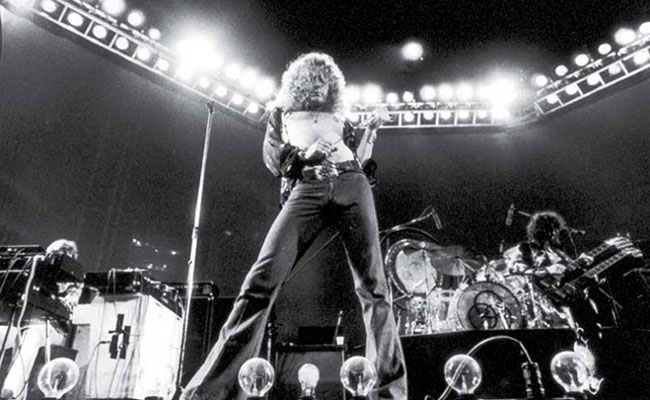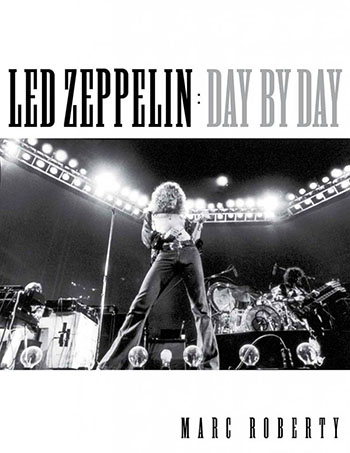Imagine Led Zeppelin in our contemporary culture, with smart phones and social media documenting their every activity and utterance—a ceaseless spectacle. It’s impossible. Literally; obviously. But it’s possible that the legend, the mythology of Led Zeppelin would never reached such heights in today’s social-media climate. The sui generis nature of Led Zeppelin’s lore is that they were at once the biggest band on the planet and—to their considerable credit—the most secretive.
More, they disdained singles, rarely granted interviews (this was especially relevant, and came to augment their street cred, considering the near-universal hostility they encountered from the press during the first several years of the band’s existence) and for better or worse, gave no quarter. As such, for a band virtually everyone knows of, relatively little, at least of substance, is known about Led Zeppelin. Certainly, after the spuriously-sourced and sensational Hammer of the Gods (the unauthorized and mostly discredited 1985 biography of the band by Stephen Davis), all bets were off, and many of the more outlandish rumors (Jimmy Page as shady fan of the occult, Plant’s young son dying because of a botched deal with the devil, etc.) were accepted as fact.
For these fans, Marc Roberty’s Led Zeppelin, Day by Day will become an enduring bible: the good times, the bad times and even the boring times are all documented here, along with tons of color photos and visual curios. Concert promos, press releases, recording session specifics, concert reviews and, for completists, set-lists of every gig. These days most, if not all of this detail and detritus is readily available via the web, but it’s to Roberty’s credit that he was able (and willing!) to assemble everything in one aesthetically pleasing package.
Taken strictly as a historical document, it’s instructive to remember that even though the band was a super group of sorts (Page and John Paul Jones are both well-regarded session musicians and Page, recent guitar god in residence for the Yardbirds), their success was anything but guaranteed. (Of course, as most fans know, the name itself—initially Lead Zeppelin—was a sardonic prediction of how they might be received.) It’s therefore amusing to see an advertisement from December 1968 listing them as “Len Zefflin”, supporting Vanilla Fudge.
On the other hand, eyewitness testimony at the time confirmed that the Mighty Zep would be an unstoppable force. More than one concert review speculated how long they would continue as an opening act, and before long, commentary suggests they were blowing headliners off the stage. The bass player from aforementioned Vanilla Fudge is quoted as saying “There’s no way we can follow that,” as his band rather sheepishly started their own set.
It’s also fascinating to be reminded, considering the Golden God Robert Plant would become, that the group was Jimmy Page’s and, in the early days, he was acknowledged (within and without the band) as the leader. Considering how admired he was as a musician, even by naysayers of the band’s albums, it’s extraordinary how humble—bordering on reticent—Page has always been. Always content to let his art speak for him, Page remains a role model for our TMI era.
Unfortunately, not all the sordid stories are without some basis in fact. We see, even in the initial years, certain shows being lackluster, or canceled altogether due to John Bonham’s various health crises. Bonzo, as was known long before Hammer of the Gods, struggled mightily with alcohol and his antics were a recurring tribulation the others had to deal with. Still, like his compatriot and sometime partner-in-crime Keith Moon, Bonham was seldom boring. One high (and/or low) light is Zeppelin being banned for life from the Tokyo Hilton after a 1971 incident where Bonham massacred his hotel room with—wait for it— a Samurai sword. (When in Osaka…)
Even the most hardcore haters will be hard-pressed to not admire the band’s consistency and (yes) professionalism, confirmed by set-list after set-list. Led Zeppelin built their status, in part, by giving three-plus hour concerts at a time when 90 minute gigs were standard. It’s also telling to contemplate the way famous acts are obliged to play the same songs every show: that Zeppelin was capable of playing “Dazed and Confused” and “Whole Lotta Love” virtually every show for a decade is laudable. Again, once the hysteria and hype is stripped away, the secret to success isn’t particularly complicated: put the fans first, and make meaningful music.
Led Zeppelin has, for many years, been all-things to all people: loathed, loved, copied, scrutinized, glorified. For most, the songs are all that matters; for those who can’t get enough and can’t help needing to know it all, Roberty’s book should scratch that itch. It’s also a refreshing throwback of sorts, having this coffee table book with color photos in the service of recounting how Led Zeppelin became the biggest and most enigmatic band of their time.


